PROTECT YOUR DNA WITH QUANTUM TECHNOLOGY
Orgo-Life the new way to the future Advertising by AdpathwayIt’s a scant 12C in Bendigo, but scores of fans whirr through the showground’s pavilion. The stars of this weekend’s proceedings hope to shine, but it’s important they don’t sweat too much before their time in the limelight.
“They need to keep their hair nice and well done,” says Lee Sadler, vice-president of the Australian Alpaca Association. “We’re all hoping for a good hair day.”
The Australian Alpaca National Show is fashion week for local camelids. Throughout the pavilion, pens filled with straw, feed and fans are set up to house the fluffiest, silkiest and shaggiest of the nation’s herd.
Some alpacas have made the trip to rural Victoria from as far as Western Australia, and some farmers have travelled from Germany to see the best of Australia’s young but thriving alpaca industry over the three days.
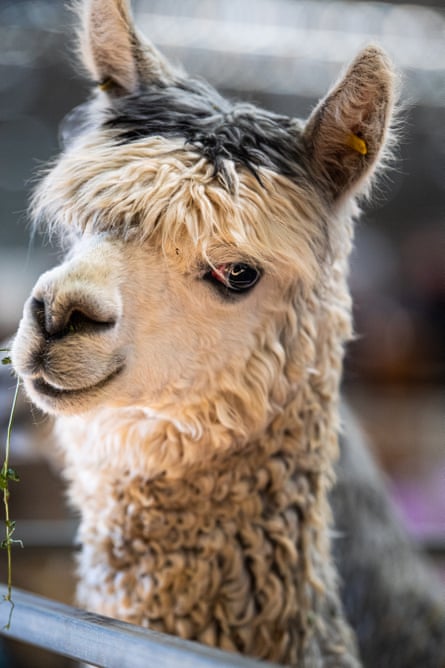
It’s an important event: a good hair day here can mean a blue ribbon, a trophy, a business advantage. “When you participate, you take the best of your herd,” says Sadler. At the end of the weekend, the most outstanding of all the classes is crowned Supreme Champion.
It’s hard not to be enchanted by the alpacas, with their fluffy coats, long necks, big eyes and eyelashes that would make a supermodel jealous. Not to be confused with their llama cousins, alpacas are smaller, have longer, softer hair, and are generally less spitty and stubborn – though some of the animals strutting their stuff in the ring at Bendigo might give the bossiest llama a run for its money.
Friday’s competitive circuit features six- to 12-month-old juniors – alpacas, not handlers – and 12- to -18-month-old intermediates. Pressing closely up to each competitor, one after another, are the judges, identifiable by their white armbands (against which they inspect the details of sample hairs) and that they’re wearing coloured jackets and ties while everyone else is rugged up in black puffers.
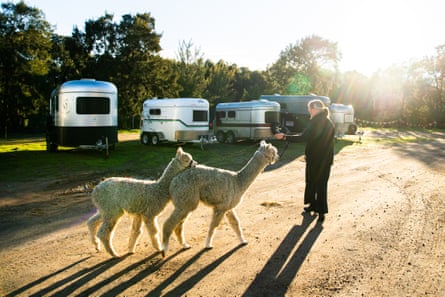

The details of a good fleece are only visible up close: things like staple length and fineness, sheen and lustre, even distribution across the animal. A videographer follows the judges and zooms in, the footage livestreamed to a huge screen behind the trophy table so the audience can see what the judges do.
Some alpacas loop the ring and pose calmly. Others are recalcitrant, pulling at their halters, refusing to be led in any direction, leaping about – even launching themselves on to their handlers, who try desperately to settle them, acutely conscious that there is no dignified way to wrestle an alpaca.
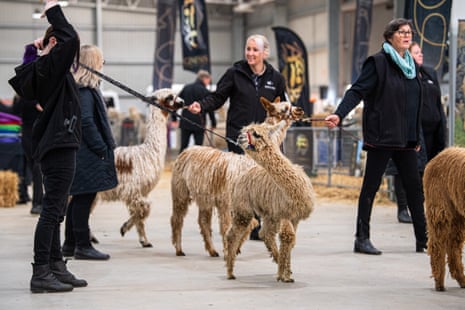
There are two distinct types of alpaca: most of those in Australia are Huacaya, which look like fluffy long-necked teddy bears; between 10% and 20% are the longer-haired Suri. Suri look shaggier but their fleece is finer, shinier and sought after in couture and high-fashion suiting.
There are about 350,000 alpacas in Australia, though numbers may be higher after a baby boom a couple of years ago. Australia has the largest herd outside South America – no mean feat for a species that was only introduced here 35 years ago. A 2021 Agrifutures report estimated that more than two-thirds of alpacas were used to produce fibre for sale, and surmised the industry to be worth $19.5m at the time.
Ron Condon was one of Australia’s first alpaca farmers, and he’s still going. A founder of the alpaca association, he was one of a handful of players integral to the importation of about 400 high-quality Peruvian alpacas between 2000 and 2005, a project that involved not insignificant political manoeuvring, altitude sickness and a particularly bad case of food poisoning – leading to a significant increase in the quality of fleece produced by Australia’s herd. Prior to that, all the alpacas in Australia had come from Chile.
“[The Peruvian breeder] said to me in Spanish, ‘You can have anything but my soul,” Condon says. “We had access to his best animals … We were very lucky.”
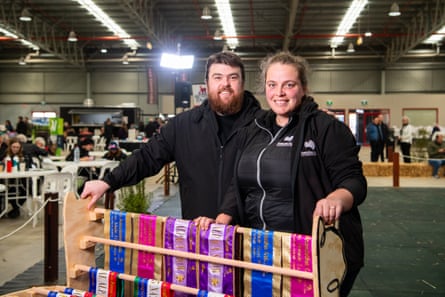
Show convener Jonathon Provis-Vincent has been shearing alpacas for 12 years and breeding them for 10. He met his partner Maddy Bissels through alpacas, and the couple have a herd of about 80 at their farm in Ararat, about 180km west of Melbourne.
“They actually do have personality. They each have their own character and little social hierarchy,” Provis-Vincent says.
He has fond memories of one of his first alpacas, a female named Galaxy, who he says helped him fall in love with the breed. “You could just walk up to her and hold her and she’d actually lean into you for pats,” he says. “And then if you’re standing there holding her, if you look at her, she then moves her nose up to like give you kisses.”
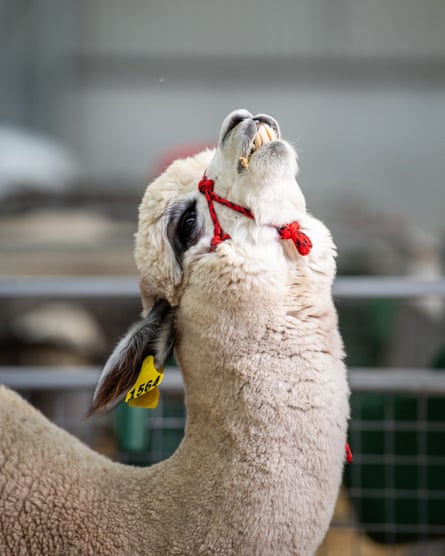
Every farmer has an alpaca they remember, though farm stories are always flavoured with a particular kind of humour.
Ros Davis, from Elimbari Alpacas outside Canberra, tells me about a naughty alpaca named Monet that had a penchant for escaping – an unacceptable hazard for both alpaca and human. “We found him out on the road one night,” Davis says. “We ate him after that.”
Soon after Monet had been taken to the butcher, however, she and her husband went into Canberra only to find the town bedecked with banners advertising an exhibition of works by the great (human) artist and their late alpaca’s namesake. “We felt so awful!” she says. “We’d just put him in the freezer!”
Most alpaca farmers have only smallish herds, and often have a second income source. That’s changing, though, as the industry ages and some farms become intergenerational. Max Mathews, for example, works at the alpaca farm started by his grandparents. His grandmother, Fay Wilson, holds the halter of his animals in waiting as he and his partner Taryn lead each competitor into the ring.
The fashion, arts and crafts community is becoming an increasing presence at the show, as for most alpaca farmers these days, the focus is on breeding for fibre quality rather than stud stock. The market for alpaca meat in Australia is only very niche and limited by infrastructure – namely a scarcity of abattoirs with credentials to work with camelids.
Alpaca yarn behaves differently to sheep’s wool, which can take some crafters by surprise, especially if they’re familiar with the bounce and elasticity of merino or corriedale. While the alpaca craft show is modest in size compared to the vast multi-shed spread of Bendigo’s annual Australian Sheep and Wool Show, interest here has also grown. Conveners of the craft competition say they received just 15 entries a few years ago, but had 130 this year.
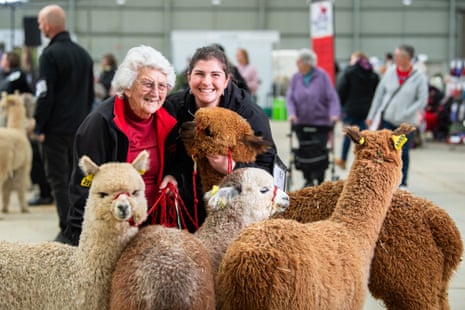
It took some work for alpacas to be seen as a legitimate, viable livestock industry in the eyes of big ag, Sadler says, but she believes they have finally made space for themselves at the table. “We’re not a hobby. This is not a fancy kennel club. We are a sustainable, viable fibre industry.”
She is a deep enthusiast for alpaca fibre. “Alpaca is the most insulating natural fibre in the world. It’s light and warm and comfortable. It’s very comforting to wear and it’s difficult to convey that until people actually put it on and they go, ‘oh, it feels so nice’.”


 1 day ago
13
1 day ago
13


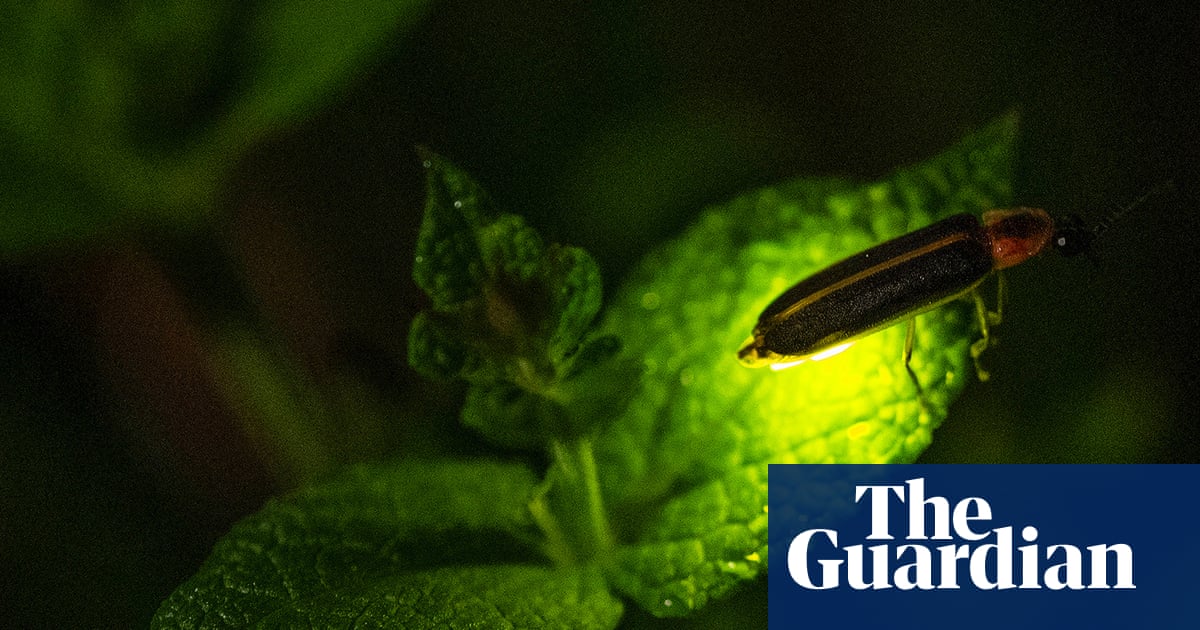
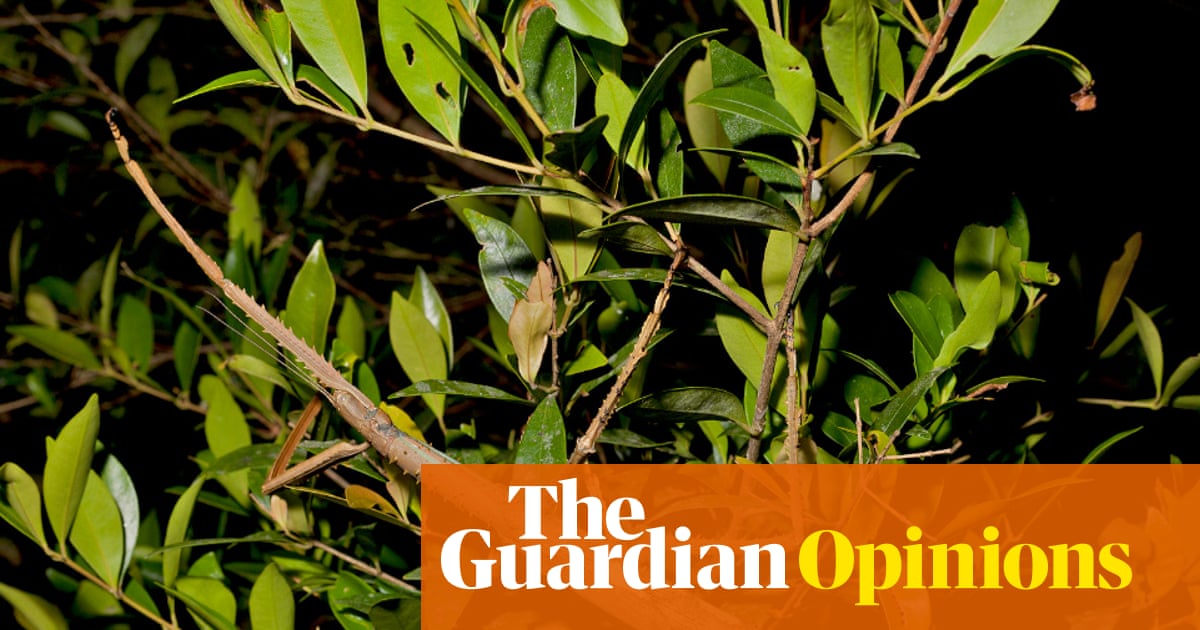

















 English (US) ·
English (US) ·  French (CA) ·
French (CA) ·